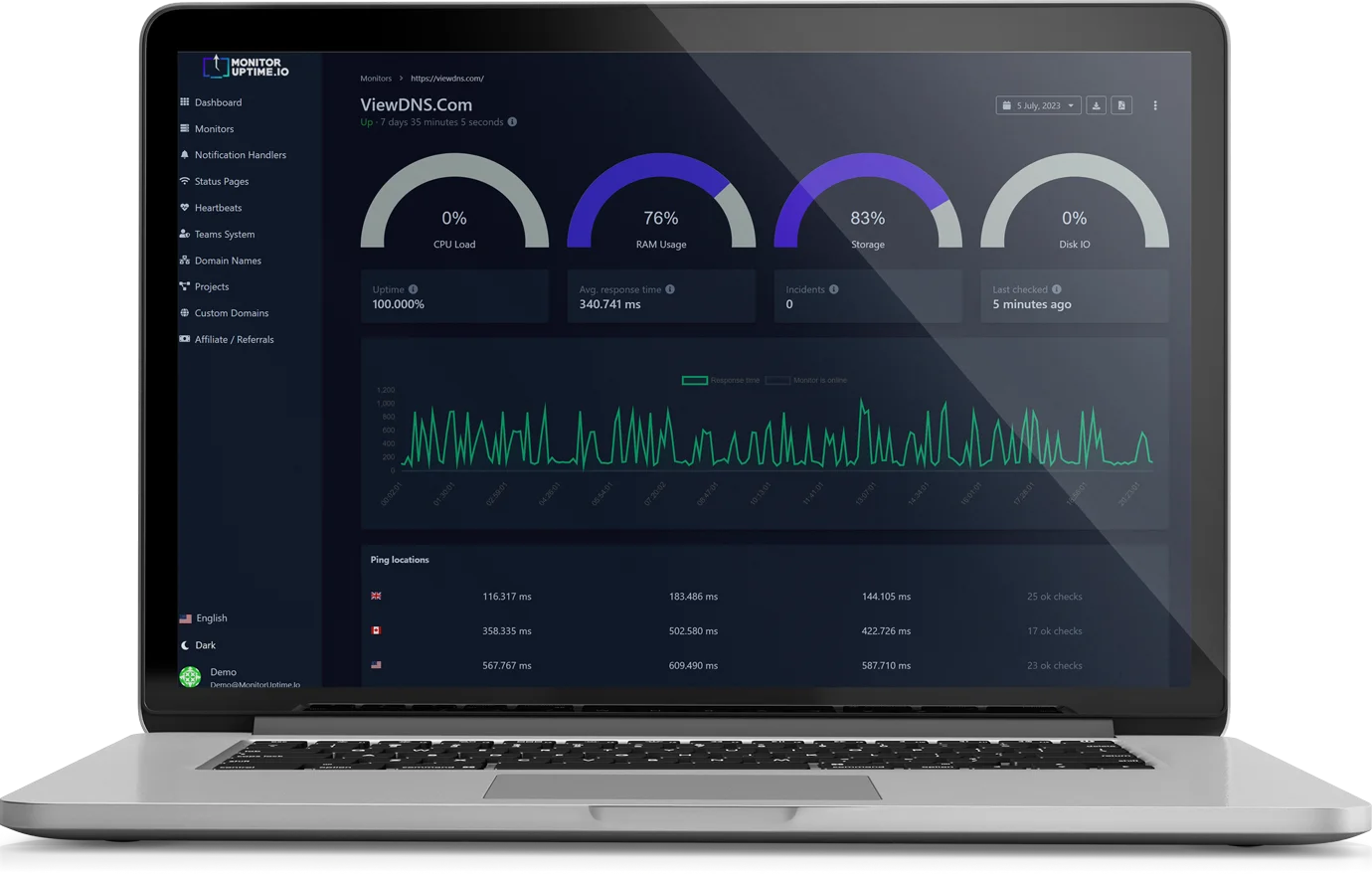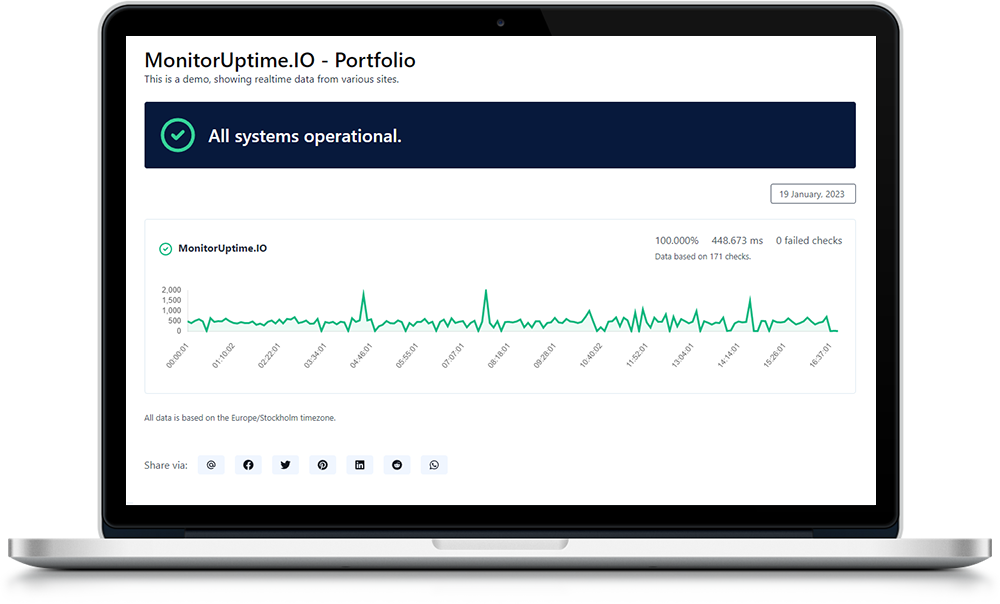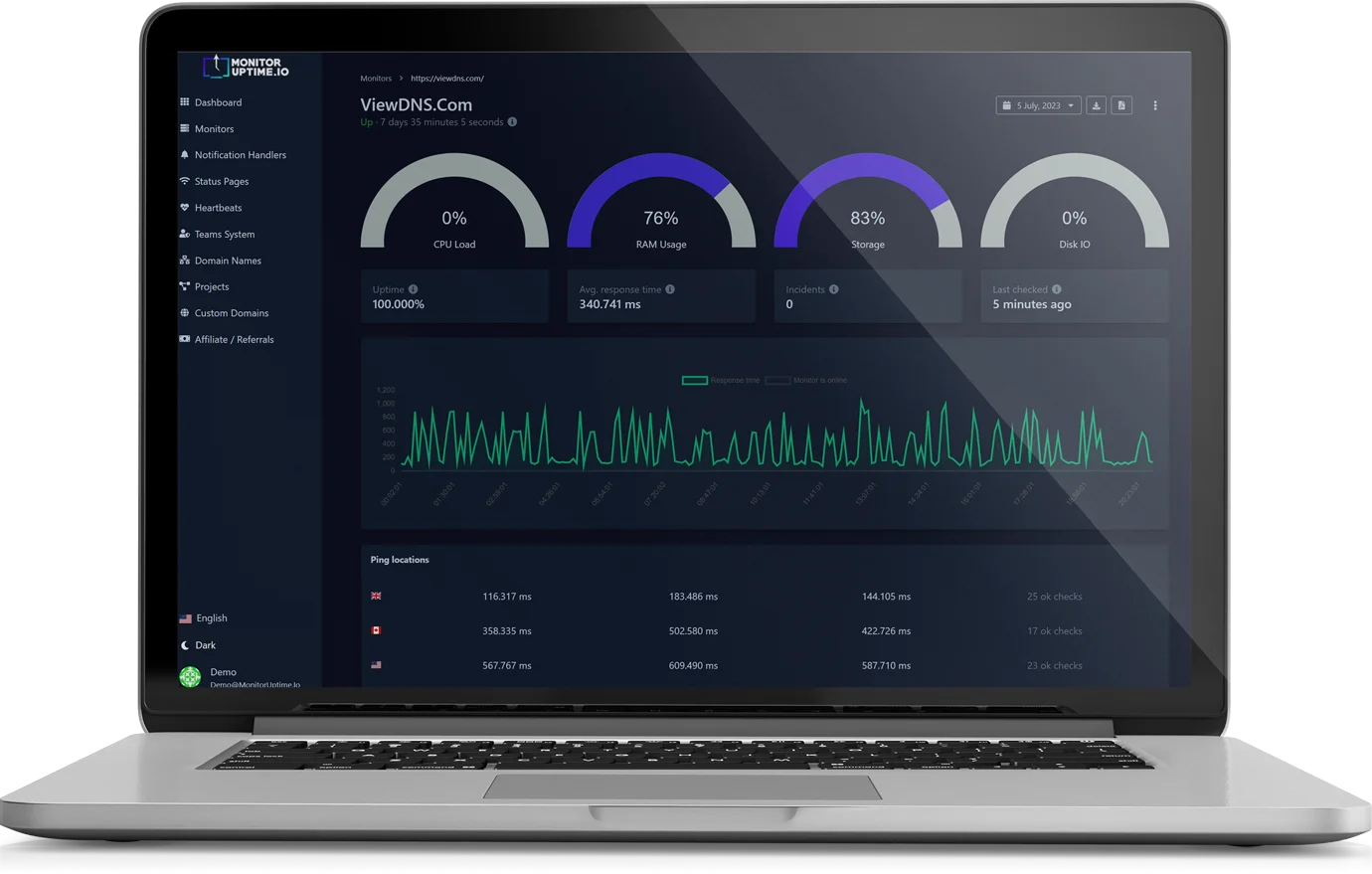
The Importance of Website Monitoring and How to Do It
Website monitoring is the process of regularly checking a website or server to ensure that it is online and accessible to users. This is an essential step in maintaining the uptime and performance of a website, as well as ensuring that users can access the site without interruption. In this article, we will discuss why website monitoring is important, and how it can be done using website monitoring websites. We will also explore the different methods of website monitoring, such as pinging the website, downloading content, and searching for specific keywords in a text to verify that the site loads correctly. Additionally, we will discuss the importance of monitoring website from multiple geo-locations in the world, such as France, Australia, Singapore, United Kingdom, USA, Poland, Canada, and Germany. Finally, we will look at how to monitor response times and response status codes to ensure that the website is performing optimally.
The Importance of Website Monitoring
Website monitoring is an essential step in maintaining the uptime and performance of a website. It ensures that users can access the site without interruption and that any issues are identified and resolved quickly. In this section, we will discuss why website monitoring is important and how it can benefit your business or organization.
How to Monitor a Website
There are several methods for monitoring a website, including pinging the website, downloading content, and searching for specific keywords in a text to verify that the site loads correctly. In this section, we will discuss these methods in more detail and provide examples of how they can be used to monitor a website.
Monitoring Website from Multiple Geo-Locations
Monitoring a website from multiple geo-locations is important to ensure that users from all over the world have access to the site. In this section, we will discuss why it is important to monitor website from multiple geo-locations such as France, Australia, Singapore, United Kingdom, USA, Poland, Canada, and Germany. We will also provide examples of how to do this.
Monitoring Response Times and Response Status Codes
Monitoring response times and response status codes is an important aspect of website monitoring. It allows you to ensure that the website is performing optimally and that any issues are identified and resolved quickly. In this section, we will discuss how to monitor response times and response status codes and provide examples of how to do this.
Types of Website Monitoring
There are several types of website monitoring, each with their own specific use cases. These include:
- Uptime monitoring: This type of monitoring checks the availability of a website by pinging the server at regular intervals. If the server does not respond, an alert is triggered.
- Performance monitoring: This type of monitoring checks the load time of a website and the performance of specific elements, such as images and scripts. This helps identify any bottlenecks or slowdowns in the website's performance.
- Content monitoring: This type of monitoring checks for specific keywords or phrases on a website to ensure that the content is up-to-date and accurate.
- Functional monitoring: This type of monitoring checks that all the functions of a website are working properly, such as forms, buttons, and links.
- Transaction monitoring: This type of monitoring checks the performance of specific transactions, such as a purchase or login process, on a website.
Choosing a Website Monitoring Service
There are many website monitoring services available, and choosing the right one for your needs can be a daunting task. When selecting a service, consider the following factors:
- Geo-location coverage: Make sure the service has monitoring locations in the areas where your users are located.
- Alerts and notifications: Ensure that the service provides alerts and notifications through various channels, such as email and SMS.
- Reporting and analytics: Look for a service that provides detailed reporting and analytics on website performance.
- Scalability: Choose a service that can grow with your website and handle an increasing amount of traffic.
- Customer support: Make sure the service has a dedicated customer support team that is available to help you with any issues.
Conclusion
Website monitoring is an essential step in maintaining the uptime and performance of a website. By regularly monitoring a website, you can ensure that users can access the site without interruption and that any issues are identified and resolved quickly. In this article, we have discussed why website monitoring is important, how to do it using website monitoring websites, and how to monitor a website from multiple geo-locations and response times and response status codes. We also discussed the different types of website monitoring, such as uptime, performance, content and functional monitoring, and how to choose a website monitoring service that fits your needs. By implementing these methods, you can ensure that your website is always performing at its best.




